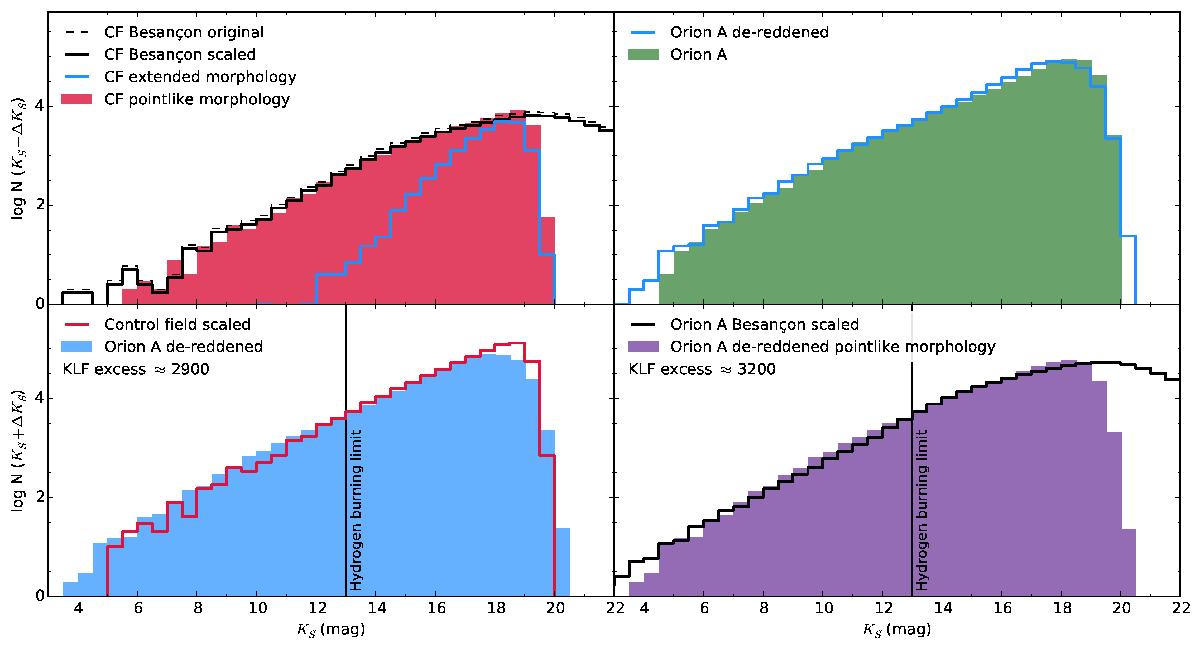Fig. 14

KS band luminosity functions (histograms; 0.5 mag bin width) for the various analysis steps to estimate both young foreground and the total Orion A population. Top left: comparison of the CF KLF with the Besançon model of the Galaxy. We find that a slight adjustment to all source counts in the model was necessary to fit the observations (see text for details). Top right: KLFs for the final survey catalog and the de-reddened data. Sources are mostly pushed to brighter magnitudes, however, we also allow (for statistical reasons) negative values of AK and therefore find a minor population at fainter magnitudes than in the original histogram (the last bin starting at KS = 20 in the de-reddened histogram). Bottom left: comparison of the de-reddened data with the scaled CF KLF. We clearly see an excess of bright sources, as expected from the young populations we find towards Orion A. Note here the good agreement of the CF and Orion A KLF for magnitudes fainter than KS = 13 mag up to the completeness limit. Bottom right: comparison of the de-reddened Orion A KLF for point sources to the Besançon model. Also here we find a clear excess of sources caused by the young populations seen towards the molecular cloud. Both comparisons deliver similar numbers which is interpreted as a validation for our statistical approach.
Current usage metrics show cumulative count of Article Views (full-text article views including HTML views, PDF and ePub downloads, according to the available data) and Abstracts Views on Vision4Press platform.
Data correspond to usage on the plateform after 2015. The current usage metrics is available 48-96 hours after online publication and is updated daily on week days.
Initial download of the metrics may take a while.


